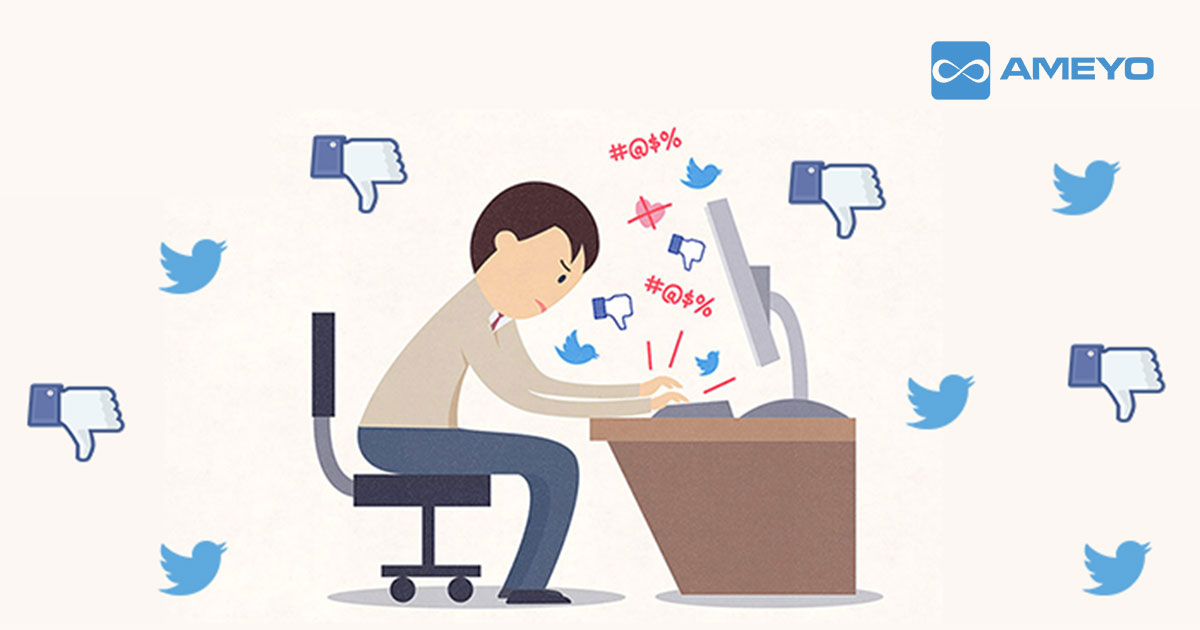Only yesterday, one of my close contacts went berserk on Facebook with the way a leading e-commerce giant has been treating him and his orders. Needless to say, he had enough reasons to go mad.
There was some problem with the payment of the items he had ordered and he didn’t receive the items even after the bank showing a successful transaction. When he reported this to the e-commerce company, he was given a cold shoulder. What followed thereafter was pretty ugly and his Facebook post went viral and the brand was forced to resolve the issue at the earliest.
Surely, the above situation proved to be a nightmare for the e-commerce company and many of us were reminded social media can be a scary prospect if things are not managed properly. When things go wrong, customers only want brands to pay heed to their concerns, by actually listening to them. Today, the need of the hour is for brands to carve a great response strategy, and convert irate customers on social media into loyal consumers. Mind you – all irate customers can’t be pacified with the same strategy, and so customized solutions need to be provided depending on the complexity of the situation.
Obviously, great customer service is a good start. However, it can never be a full proof solution to avoid embarrassing occurrences on social media. The following best practices might prove to be useful next time you have to deal with an irate customer on social media.
- Never, Ever Blame the Customer
When irate customers contact your company on social media or tag you in their post/tweet, they are ideally looking for someone who can take ownership and resolve the issue at the earliest. On some instances, it might happen that the customer is wrong or has some misconception, but you should never try to put the blame on them. That is strictly detrimental for your business. Moreover, you should never get into a fight on social media with customers. Even if you are right, people will only remember that you are argumentative. Instead, try to strike a conversation with a positive mindset, without getting emotional.
- Multiple Departments is a Strict No-No
On several occasions, customer concerns are passed on to multiple departments and through numerous contact points. This can and will make your already irate customer, even more furious. It will be a wise move to take ownership of the issue right away or at least empathize with the customer. This will provide an assurance to customers that someone is personally handling the issue and helping them to find a solution to their problems. There are growing instances where customers blame companies in their social media posts. All you have to do is empathize with their state, rather than passing the blame to a different department.
- Personalized Responses should be the Preferred Option
Don’t simply put a copy pasted reply, while responding to irate customers. This will make things worse, especially if the response doesn’t even apply to the customer’s specific concerns. This is one of the major reasons why customers become irate in the first place. Every day, tons of comments appear on your social channels. While some of the customer problems might be similar, most customer situations are not identical. Choosing to tailor the response to better fit individual worries will go a long way to help calm down annoyed customers.
- Don’t Make Promises You Can’t Keep
Once you have listened to the concerns carefully, you need to properly handle the situation and swiftly communicate your plan of action. A prompt response is normally helpful to ease the tension but will not always extinguish the flames of customer’s frustration. Let the customers know what you plan to do to resolve their issues. However, be very mindful not to make any promises that you can’t keep. It can be safely said that a mere statement like “We’ll look into the issue” won’t be of any help at present times.
- It is Always Good to Follow Up
If you thought an issue has been resolved after you have helped a customer with their issue on social media, you were highly mistaken. To ensure that your customers are truly satisfied, it is always good to follow up. This precisely means that you have to get in touch with the customer on social media within a short while after the issue was raised. This will allow you to gain stock of the customer’s situation and will also help to build trust. If you are lucky, customers might also reward you with a happy testimonial!
What are some of the customer issues you have faced on your social media pages and what all did you do to resolve those issues? We would like to hear them, please mention your experiences on this subject in the comments section.


